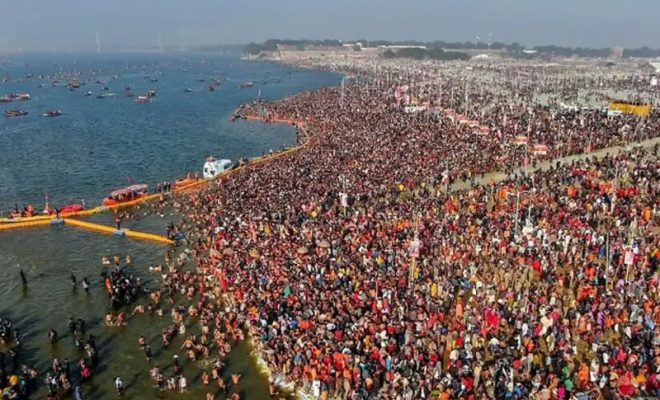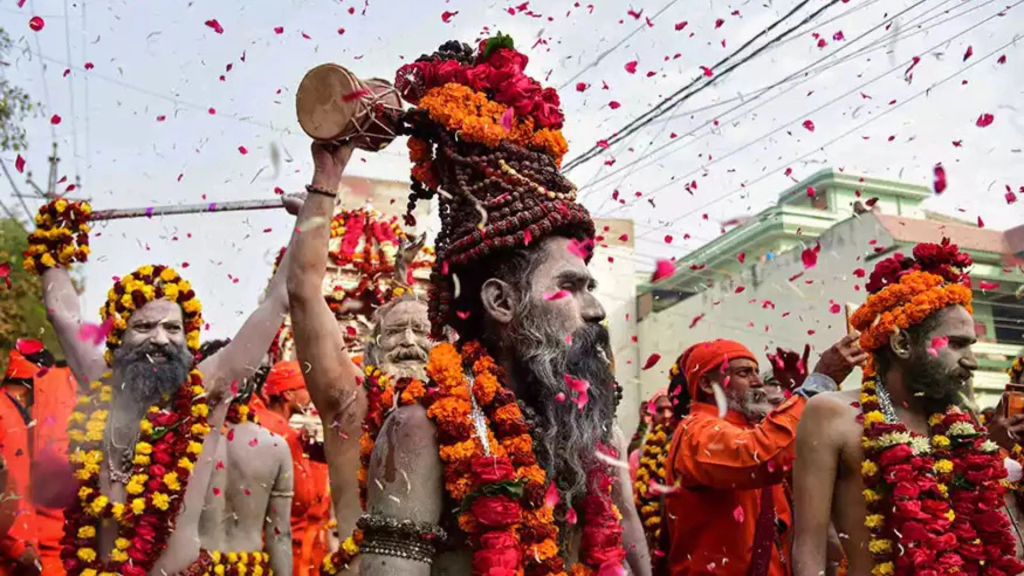Why the Maha Kumbh Mela Attracts more than 45 Crore Devotees?

The world’s greatest gathering includes 45 crore divottes to attend over the next siz weeks, 40,000 security personnel and 1.5 lakh tents. To boost surveillance, 2,751 CCTV cameras including 328 AI-enabled cameras are put at strategic places together with powerful AI-powered analytics. As the Maha Kumbh begins in Uttar Pradesh’s Prayagraj with pilgrims preparing to take a sacred plunge on January 13-14, a seven-ring security plan has transformed the mela area into a fortress for pilgrim safety. But the question is what attracts crores of devotees from not just India but across the entire world? What’s in this Maha Kumbh that people are considering is a once in a lifetime chance?
The Maha Kumbh Mela began in Uttar Pradesh’s Prayagraj on January 13. The 45-day religious gathering is noteworthy for Hindu visitors and devotees because it symbolizes the completion of 12 Kumbh Mela cycles which occur once every 144 years.
History of Maha Kumbh:
The Kumbh Mela originated with the eighth century Hindu philosopher Adi Shankaracharya who promoted regular gatherings of spiritual leaders and ascetics. He also established the monastery system and the 13 akharas which consisted of warrior class monks and seers.
According to Hindu mythology, the Kumbh Melas originated with Samudra Manthan or the churning of the cosmic ocean when deities and demons gathered to seek amrit or the nectar of immortality.
According to Hindu mythology, Lord Vishnu disguised as Mohini took the pot of amrit after the ocean had churned to preserve it from demons. A battle broke out resulting in drips of nectar landing at four locations: Prayagraj, Haridwar, Nashik and Ujjain.
These places have four Tirthas or sacred shrines and a plunge in the rivers that pass through them. The River Kshipra in Ujjain, the Godavari in Nashik, the Ganga in Haridwar and the Sangam in Prayagraj would result in salvation.
Sangam in Prayagraj is the confluence of the Ganga, Yamuna and the mythological Saraswati rivers. It is thought that washing in these rivers during the Kumbh Melas will wash away devotee’s sins and enable them to achieve moksha or salvation.

Attraction of Maha Kumbh Mela:
The Maha Kumbh Mela is the most exclusive and sacred gathering of all Kumbh Mela. There are four main forms of Kumbh Melas which are held every three years on the banks of rivers in Haridwar, Ujjain, Nashik and Prayagraj in rotation. The Ardh Kumbh Mela occurs every six years at Haridwar and Prayagraj. The Purna Kumbh Mela takes place every 12 years at the four sacred places attracting millions of devotees and pilgrims.
But the Maha Kumbh Mela is celebrated in Prayagraj to mark the completion of 12 Kumbh Mela cycles which occur once every 144 years and the rarest as it takes more than a decade. The main occasion is extremely sacred with Shahi Snan or holy plunge being the focus.
Also the 2025 Maha Kumbh Mela is especially significant since it marks the end of 12 Kumbh Mela cycles. Explaining the importance of this year’s Maha Kumbh, Mahant Harichaitanya Brahmachari head of TikarMafi ashram told Times of India (TOI), “It is after 144 years that the positioning of all the four planets is in line and three hours prior to Amavasya (January 29) importantly Pukh (also pushya) Nakshatra will also align with the four planets. Thus, the most auspicious of all the Maha Kumbh in the past 144 years is in 2025.” These four planets are the Sun, Moon, Jupiter and Saturn.



